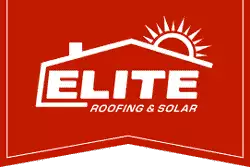If You’re Faced with Hail Damage, You Likely Have Questions About Your Insurance Coverage
As Colorado’s hail season approaches, homeowners should be aware of their options when facing hail damage. While repairs can be effective, roof replacement may provide more peace of mind. We’re often asked here at Elite Roofing & Solar: “How much hail damage warrants a full roof replacement covered by insurance?”
There are no hard and fast answers to this question, as the situation is highly dependent on a number of factors. However, there are some details we feel it’s important to share when it comes to hail damage and your roof. Here’s what you should know if you’re faced with hail damage to your roof.
How Much Hail Damage for Insurance to Replace a Roof?
In general, insurance companies that cover hail damage will require a certain number of hits per square in order to pay to replace your roof. A “square” is a roofing term that refers to a 10 foot by 10 foot area of your roof. The number of hits required can vary greatly; 10 hits within a square is a common benchmark, but this is far from universal.
However, even when providing this vague of an answer, we must include many caveats. Some insurance providers may not use this method to determine whether a roof replacement is warranted, for instance, while other carriers or policies (though unlikely) may not cover hail damage at all. This is why it’s important to read up on your insurance policy and even talk to your provider about the specifics of your insurance plan.
What Situations Will Result in a Lack of Insurance Coverage?
Despite the above answer, there are many situations where your roof replacement will only be partially funded by your provider—or even not funded at all. One situation, of course, is if you aren’t covered for hail damage. However, homeowners insurance policies that don’t cover hail damage in some form are fairly rare, particularly here in Colorado.
More common reasons for a lack of coverage are neglect or age. If your roof is beyond its expected lifespan, for instance, it’s possible that your insurance provider won’t cover a roof replacement. Neglect can also hurt your ability to get covered for hail damage. If your provider finds that you left previous hail damage (or other roofing issues) unaddressed, it’s much less likely that they’ll pay to replace your roof.
How Do I Find Out If My Roof Needs to Be Replaced?
Whether your insurance provider will fund a roof replacement due to hail damage and whether you need a roof replacement are two different questions. The answer to the second question is much more important—after all, if you need a roof replacement, it’s crucial to schedule this project right away. Leaving a compromised roof over your head means your home is vulnerable to the elements and can put your family at risk.
If your roof has been damaged, the most logical next step is to schedule a roof inspection from a reputable local roofing company. At Elite Roofing & Solar, we specialize in thorough hail damage roof inspections that will identify all points of roof damage. This can be useful in building your case in the event that you need to get in contact with your insurance provider.
Schedule Your Hail Damage Inspection Right Away!
Every year, Denver experiences severe hail storms that cause significant roof damage for many homeowners. Some homeowners are unsure if their insurance will cover the cost of a roof replacement. However, regardless of your insurance coverage, it is crucial to promptly inspect and repair your roof. Fixing your roof will ensure your family’s safety the next time a major storm hits the Denver metro area.
If your home was impacted by recent hail storms, contact Elite Roofing today for an inspection!
*NOTE: ELITE ROOFING & SOLAR IS NOT A PUBLIC ADJUSTER AND DOES NOT ACT AS ONE WHEN WORKING ON OUR CLIENTS’ BEHALF.*







